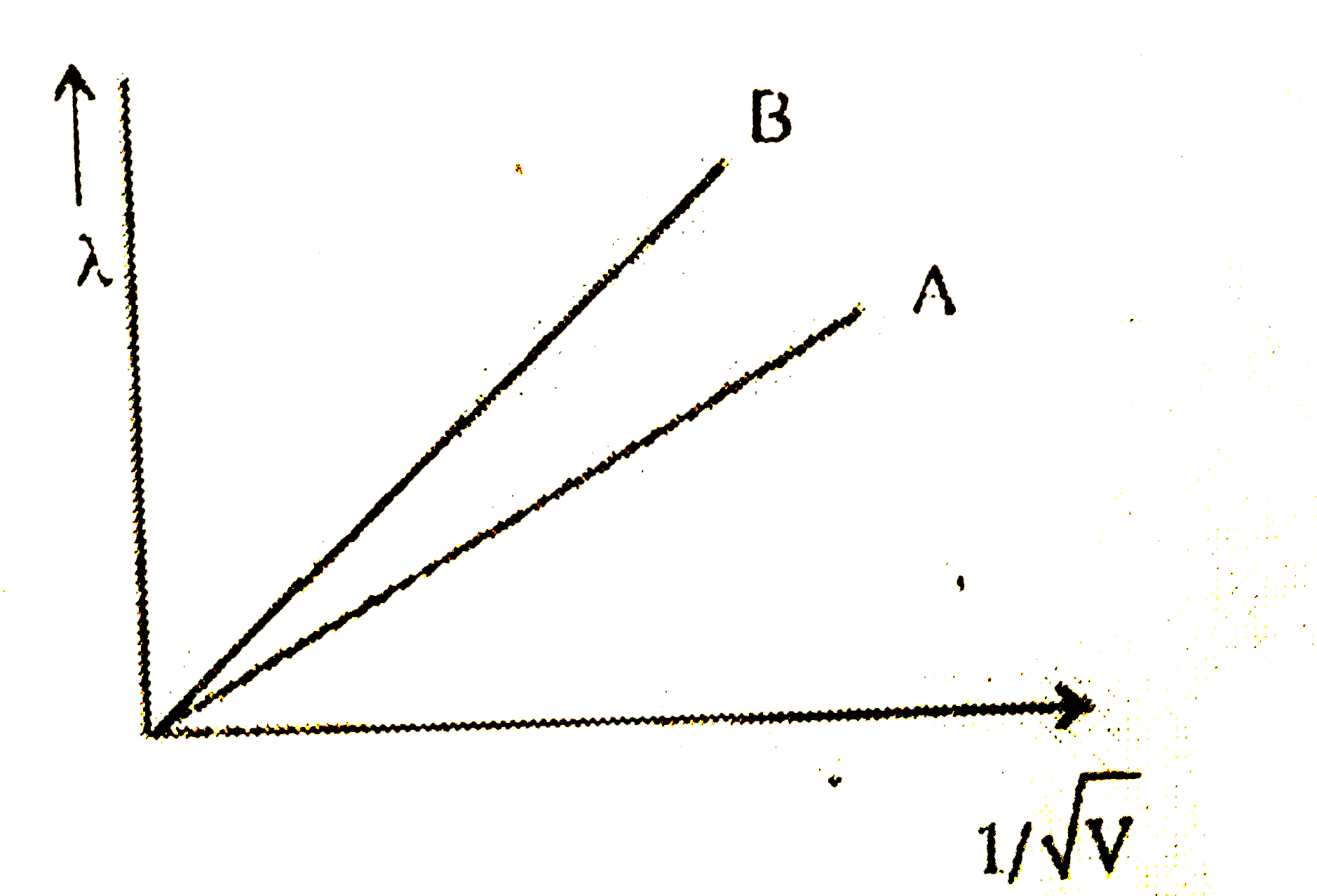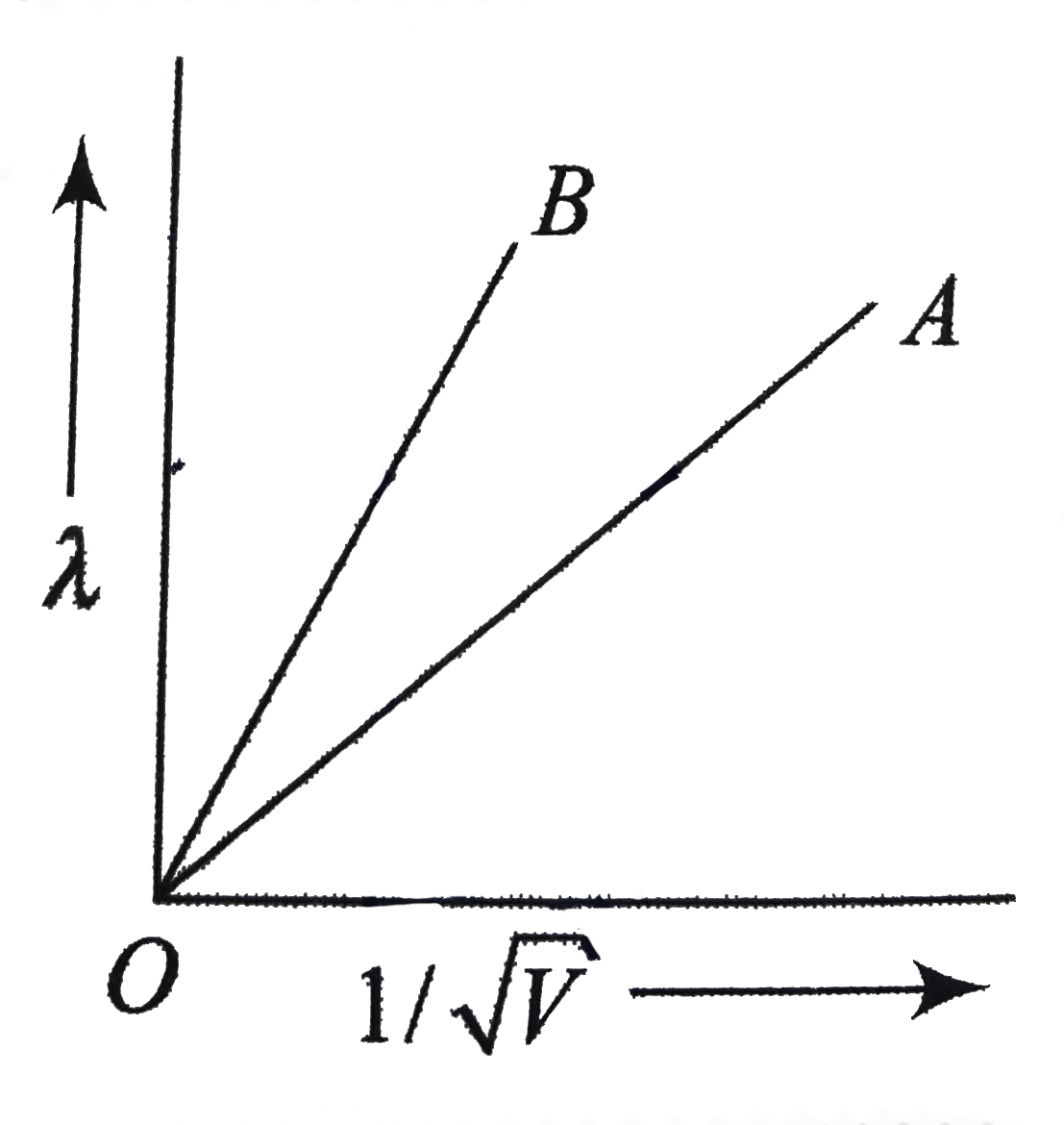Two lines, A and B, in the plot given below show the variation of de-Broglie wavelength, λ versus 1/√V, where V is the accelerating potential difference, for two particles carrying the same charge. Which one of two represents a particle of smaller mass?

∴λ=h√2meV⇒λ=h√m.√2e.1√V
⇒1√m=√2eh.(λ1/√V)∴1√m=√2eh×(Slope of λ&√Vgraph)
∴Slope of B>Slope of A1√mB>1√mA⇒√mB<√mA∴mB<mA
Therefore, line B represents a particle of smaller mass.
Topper's Solved these Questions
Similar Questions
Plot a graph showing variation of de-broglie wavelength λ versus 1/√V, where V is accelerating potential for two particle A and P carrying same charge but of masses m1andm2(m1>m2). Which one of the two represents a particle of smaller mass and why?
View SolutionPlot a graph showing variation of de-broglie wavelength λ versus 1/√V, where V is accelerating potential for two particle A and P carrying same charge but of masses m1andm2(m1>m2). Which one of the two represents a particle of smaller mass and why?
View Solution
Knowledge Check
- Question 1 - Select One
The de-Broglie wavelength λ associated with charged particle of charge q, mass m and potential difference V is
Ah√2mqVBh2√2mqVCh√mqVDh√2qV - Question 2 - Select One
The ratio of de-Broglie wavelength associated with a proton and a μ-particle accelerated through the same potential difference 'V' is
A1:2B1:1C1:2√2D1:4 - Question 3 - Select One
Find the ratio of de Broglie wavelength of a proton and as α-particle which have been accelerated through same potential difference.
A2√2:1B3:2C3√2:1D2:1

The two lines A and B in fig. shoe the phot of de Broglie wavelength (λ) as a function of 1√V(V is the accelerating potential) for teo particles having the same charge. Which of the two represents the particle of heavier mass?View SolutionFind the ratio of de Broglie wavelength of an α -particle and a deutron if they are accelerating through the same potential difference
View SolutionFind the de Broglie wavelength of an alpha particle accelerated through a potential difference of 100 V.
View SolutionShow graphically, the variation of the de-Broglie wavelength (λ) with the potential (V) through which an electron is accelerated from rest.
View SolutionShow graphically, the variation of the de-Broglie wavelength (λ) with the potential (V) through which an electron is accelerated from rest.
View Solution
